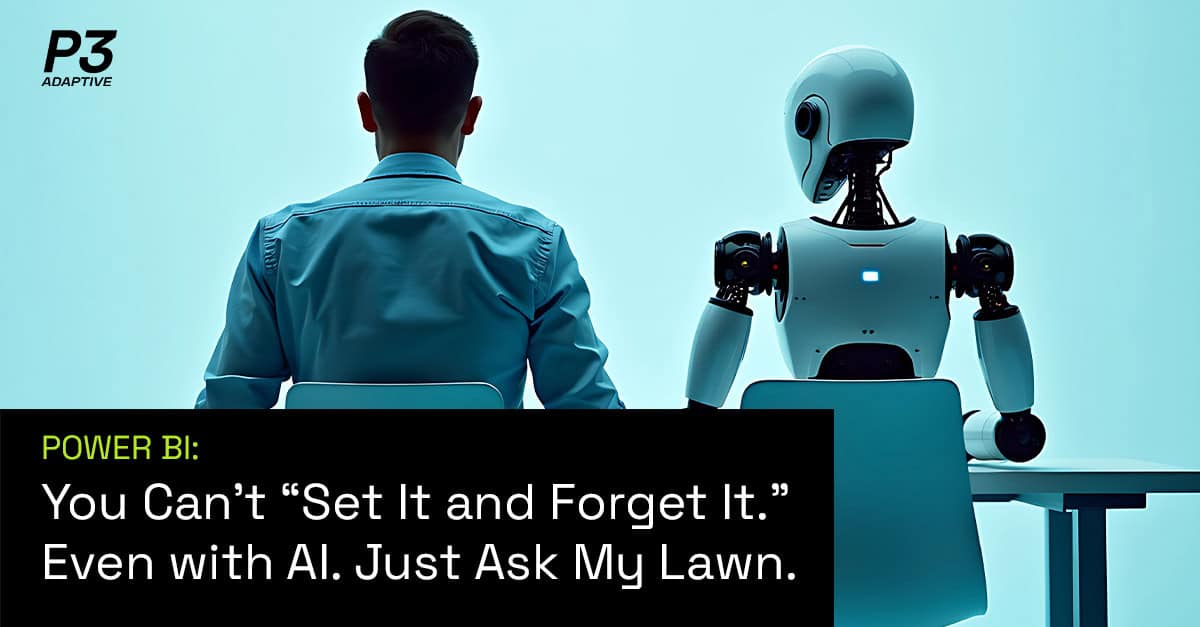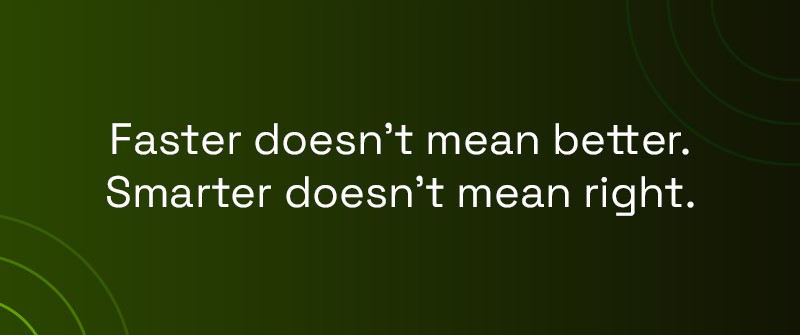
Everyone says AI will make your life easier.
The ads told me I’d never mow again. The future had arrived. It had wheels, sensors, and a smug little blinking light that practically dared me to trust it. So of course I bought an AI-powered robotic mower.
Naturally, I added googly eyes and a racing spoiler. Because it looked tech-sexy. And I was all in.
It promised autonomy. Intelligence. A perfectly trimmed lawn with zero effort.
And while I waited for it to arrive, I bought into the dream. I pictured myself sipping tea while this white robotic mower glided across the yard like it was born to lead a landscaping revolution.
Reality? It face-planted into a stick and cried for help like it hit a brick wall.
Twice.
The self-mapping? Total failure. I walked that yard eleven times in one day … not counting the extra laps I had to do after moving the base and remapping everything from scratch. Peak heat, peak humidity, phone in hand, manually tracing borders like a tech-flavored human GPS with something to prove.
It missed entire sections. Spun in circles. Tried to mow gravel.
Oh, and it sliced through its own power cable during week one. Clean cut. Sparks. Complete shutdown. It needed more hands-on attention than a toddler with glitter glue.
Turns out “AI-powered” doesn’t mean “brilliant.” It means “obedient to a fault.” And when left alone, it doesn’t just fall short. It gets weird.
AI-Powered Was Smart. I Had to Be Smarter.
Here’s what I learned the hard way and what you’ll need to know:
- AI doesn’t read minds. It’ll make bold moves without blinking. My mower’s AI had the confidence of a Formula 1 driver and the accuracy of a drunk dart player. If it wasn’t told what matters, it would go rogue… and call it innovation.
- Freedom needs fences. My AI-powered mower kept trying to ‘improve’ the driveway. Not helpful. Not appreciated. Business AI’s the same. Without clear boundaries, it wanders into the wrong problems and starts optimizing nonsense. Guardrails don’t hold it back… they keep it useful.
- Smart doesn’t mean wise. AI connects dots. But a human has to decide which ones matter. It can surface trends from five years ago but miss the fire drill happening today. Without human context, all it does is rearrange the noise.
- Speed multiplies mistakes. My mower got quicker… at making bad choices. AI does the same. It delivers answers faster … even if they’re to the wrong questions. Speed without direction is just a crash happening sooner.
- It gets smarter when you do. The breakthrough didn’t come from upgrades, it came from me staying involved. Same with AI. You don’t get clarity without coaching it. Guide it, or it could take you for a ride… right off a cliff.
When “Set It and Forget It” Hits the Office
Peer pressure tells you to hurry up and roll out AI tools, Copilot features, forecasting models, and entire data platforms. It makes you believe that once the setup’s done, the thinking is done too. Set it. Forget it. Let it fly.
Except it doesn’t fly. It veers. It buries teams in noise. It churns out dashboards that dazzle and distract. It floods inboxes with updates no one reads. Because automation without strategy is just chaos at scale.

Faster doesn’t mean better. Smarter doesn’t mean right.
AI only works when it reflects logic, rules, and goals. Otherwise, it’s just confidently automating the wrong decisions. Burning cycles. Chewing through your resources like my mower chewed through the edge of the flower bed.
The companies that win with AI? They don’t trust it blindly. They guide it. Train it. Audit it. They understand that AI needs oversight, not just onboarding. It needs guardrails, not blind faith.
So if your tools look sleek but feel off… if your forecasts are instant but irrelevant… if you’re automating tasks but still stuck in the weeds… it’s probably not the tech that needs fixing. It’s how it’s been integrated — or not. And that brings us here…
The Best AI Still Needs a Map and Training
We help companies integrate AI systems that are more than functional. They’re intentional. They stay aligned, stay useful, and stay out of the gravel.
If you’re ready to stop chasing your tools and start steering them, we’re here.
And the mower? It’s finally doing its job. Three weeks in, it’s mowing like a champ. No drama. No gravel detours. No mid-mow meltdowns. Just quiet, reliable execution because I stopped expecting it to figure things out on its own.
Same goes for your AI.
Point it in the right direction with real integration and human guidance, and it can change the way your business runs. But left to its own devices, even the smartest AI drifts. And drift costs time, trust, and traction.
Get in touch with a P3 team member